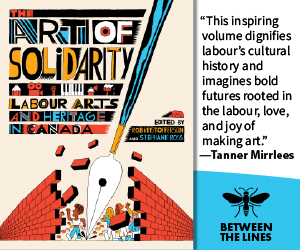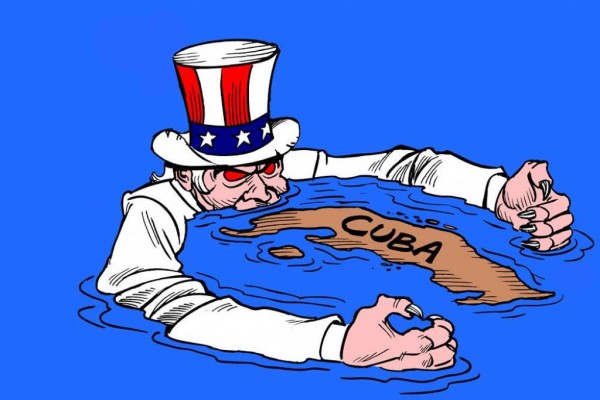Nuclear colonialism and the Marshall Islands
Nuclear colonialism has resulted in irrevocable damage to the Marshallese, and to Indigenous lands around the world

The second atomic bomb test at Bikini Atoll in the South Pacific on July 25, 1946. This was the fifth detonation of a nuclear weapon in history. Photo courtesy the United States Department of Energy.
I weave through book after article after website
all on how the US military once used
my island home
for nuclear testing
I sift through political jargon
tables of nuclear weapons
with names like Operation Bravo
Crossroads
and Ivy
quotes from American leaders like
90,000 people are out there?
who gives a damn?
—Kathy Jetn̄il-Kijiner, “History Project” (2012)
On March 1, 1954, on the so-called “Pacific Proving Grounds” of the Marshall Islands, the United States military detonated a 15 megaton thermonuclear weapon called “Bravo” (the first in the “CASTLE” test series) and exposed the residents of the Bikini Atoll to its radioactive fallout.
Shortly after the blast, US officials claimed that “meteorologists had predicted a wind condition which should have carried the fallout to the north of a group of small atolls lying to the east of Bikini… The wind failed to follow the predictions but shifted south of that line and the little islands of Rongelap, Rongerik and Utirik were in the edge of the path of the fallout.”
Those down-wind of the explosions suffered severe burns and were exposed to massive amounts of radiation, irreversibly altering the trajectory of the region and its inhabitants forever.
Following the Bravo detonation, a team of American scientists began Project 4.1, a medical study in which the biomedical and physiological impacts on the contaminated islanders were monitored without their informed consent.
In effect, the Marshallese served as human guinea pigs in a massive nuclear experiment. In 1956, Merril Eisenbud, director of the US Atomic Energy Agency’s health and safety laboratory, summarized the attitude of the American government when he said the Marshall Islands were “by far the most contaminated place on Earth and it will be very interesting to get a measure of human uptake when people live in a contaminated environment.”
In total, 67 nuclear tests were conducted near the Marshall Islands between 1946 and 1958. Holly Barker, an anthropologist from the University of Washington, notes that “if you take the equivalent of 67 nuclear tests conducted that we know occurred and stretch those out over the 12-year testing period… it’s 1.6 Hiroshima-sized bombs every day for 12 years.”
Although Project 4.1 officially ended decades ago, catastrophic health issues continue to affect many Marshallese. Cancer and birth defects remain widespread among the communities. It is even common for women to give birth to what locals call “jellyfish babies” because of their translucent skin and lack of bone structure.
The nation mourns the catastrophic fallout visited upon them by the US every year on March 1, a national holiday dubbed Nuclear Remembrance Day, or “Bikini Day” after the atoll where the CASTLE Bravo bomb was detonated.
In 1946, hundreds of Bikinians were relocated before the US detonated 23 nuclear bombs at the Bikini Atoll between 1946 and 1958. While Bikinians were returned to their homes in 1969, they were evacuated again in 1978 because of high levels of radioactive elements found in their bodies. Photo courtesy the United States military.
A large portion of the population no longer lives on the islands, however. Many Marshallese relocated to the US after the signing of the Compact of Free Association (COFA) in 1986, an agreement which allows the islanders to live and work in America but does not grant them citizenship. One of the largest concentrations of Marshallese in the US is in Washington state—which, ironically, is where the plutonium and uranium for the Bravo test was mined.
This March, the COFA Alliance National Network held the virtual Marshall Islands Nuclear Remembrance Week. Their program reads: “We are not alone! We shall never forget! The resilience and strength of nuclear frontline communities who are continuing to fight for dignity and respect must be upheld by these remembered stories towards justice.”
The Marshallese struggle for dignified treatment by the US government continues to this day. While their plight is often ignored by the media and politicians alike, they briefly entered the news in December 2020 when Congressional lawmakers agreed to allow Marshallese living in the US to sign up for Medicaid, reversing a decision in a 1996 reform package that barred islanders from the program.
One of the difficulties the Marshallese faced in securing Medicaid was proving that their health issues are the result of the nuclear tests. According to journalist Arielle Dreher, writing in the Spokesman-Review, “Only the Enewetak, Bikini, Utrik and Rongelap atolls were considered exposed by the United States,” which ignores fallout across the numerous other islands. Therefore, only individuals contaminated by the Bravo test are immediately eligible for health care benefits with the passage of this recent legislation. Victims of the other 66 tests will not qualify for Medicaid, and the onus is on them to prove the culpability of the US state.
These islanders represent one of several groups who continue to live with the adverse impacts of nuclear colonialism, defined by professor David Titterington as “an ongoing history of nuclear tests, uranium mining and nuclear waste disposal on Indigenous lands across North America.”
The impact of nuclear weapons development on the American Indigenous population is indeed another brutal legacy of the tests: in order to produce the bombs which devastated Hiroshima, Nagasaki and the Marshall Islands, the US government first thoughtlessly extracted the materials from Indigenous lands and dumped the radioactive waste back in their communities, resulting in high rates of cancers, 15 times the national average. Women on the Pine Ridge reservation in South Dakota, for example, are six times more likely to have miscarriages than the average American, due to radioactive waste from a nearby uranium mine.
Almira Matayoshi, an inhabitant of Rongelap island, recounts the ways in which the lives of her people were irreversibly altered by the detonations:
I have pains and much fear of the bomb. At that time I wanted to die, and we were really suffering; our bodies ached and our feet were covered with burns and our hair fell out. Now I see babies growing up abnormally and some are mentally disturbed, but none of these things happened before the bomb.
For contemporary inhabitants of the Marshall Islands, the detonation of the atomic bomb was a breach, a bifurcation of lived reality—there is the “before” and there is the grisly “after” to which the islanders have been subjected ever since. Adding insult to injury, the islanders have been afforded only the most begrudging acknowledgement from the US government.
In North America and the Pacific, the grave consequences of nuclear colonialism are still being felt. But we can’t understand these tests as “mistakes” attributed to historical figures of the past. Their impacts continue to reverberate in many ways.
Last year, Susanne Rust of the the Los Angeles Times reported that the Runit Dome in the Marshall Islands, a 50-year-old repository for atomic waste that the US produced during Cold War weapons testing, was potentially leaking small amounts of radioactive waste into a nearby lagoon.
Nowhere else on Earth, wrote Rust, has the United States “saddled another country with so much of its nuclear waste… The [site], known alternatively as the Tomb, holds more than 3.1 million cubic feet—or 35 Olympic-size swimming pools—of US-produced radioactive soil and debris, including lethal amounts of plutonium.”
Indeed, nuclear colonialism has resulted in irrevocable damage to the Marshallese, and to Indigenous lands around the world. But the horrible afterlife of the Bravo test is far from being relegated to history’s dustbin—it lives on in the continued production and proliferation of ever more advanced nuclear weapons and delivery systems, particularly by the Unites States. If we want to live in a world free of nuclear colonialism and environmental racism, we must see nuclear weapons as an ‘agent of oppression,’ and abolish them for good.
Owen Schalk is a writer based in Winnipeg. His areas of interest include post-colonialism and the human impact of the global neoliberal economy.










